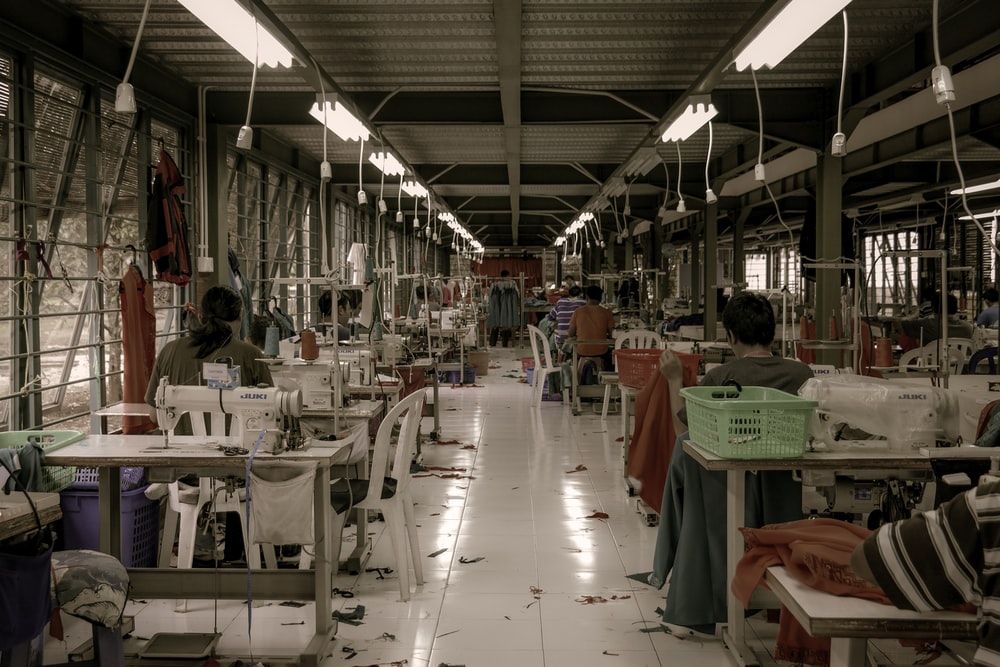The evening of July 8, 2019, the First Assize Appeals Court in Rome dictated its verdict in the Operation Condor trial, which had begun 20 years earlier in June 1999. The Appeals Court confirmed the life imprisonment verdicts dictated in 2017, while it further condemned an additional 18 defendants to the same penalty. The 24 defendants were considered all responsible for the murders of 18 Italians and 20 Uruguayans, who were victims of Operation Condor between 1973 and 1980. This verdict is a testament to the enduring struggle of victims’ families and their lawyers, who have been seeking justice for over 40 years, as well as a stark warning to present-day human rights criminals, highlighting that they will be called to account for their actions.
Maria Bellizzi emigrated to Uruguay from Southern Italy with her parents when she was just two years old. Last week, now 95, Maria eagerly awaited the sentence in Rome. She was one of the six women who had filed the initial lawsuit before the courts in Rome on June 9, 1999. Maria is still seeking to find out what exactly happened to her son, Andres Humberto Bellizzi Bellizzi, who had migrated to Argentina in 1974, as Uruguay was living under military rule (1973-1985). Andres disappeared in Buenos Aires in mid-April 1977 and, since then Maria, alongside her daughter Silvia, has dedicated their lives to finding out what had occurred to him on that fateful day. Turning to the Italian courts was an obligatory choice for the Bellizzis and other families in South America, as Maria and Silvia told me: “in Uruguay, the impunity law sanctioned by Parliament in 1986 prevented courts from investigating any lawsuits relating to enforced disappearances or human rights violations. These cases would be turned down or shelved. This situation motivated us to find a new avenue to pursue truth and justice.”
Andres is one of over 500 victims of transnational repression and Operation Condor in particular. The latter codename denotes a clandestine transnational network of political repression set up by the regimes of Argentina, Bolivia, Chile, Paraguay, and Uruguay in late 1975. Brazil joined in 1976, while Ecuador and Peru did so in 1978. This secret platform of coordinated repression allowed South American criminal states to hunt down and eliminate political opponents in exile across the region, with cases even in Europe and the US. The Condor Years, quoting journalist and academic John Dinges, lasted largely between 1976 and 1979, while repressive coordination across the region more broadly persisted between 1969 and 1981. The victims suffered the most basic violations of their human rights, including illegal arrests, clandestine detention, torture and inhuman treatment, extrajudicial executions, disappearances, sexual violence, and even baby theft.
Six women filed the first lawsuit in Rome. They were Aurora Meloni, Cristina Mihura, María Esther Gatti, Luz Ibarburu, and Maria Bellizzi, regarding five Italo-Uruguayan victims, namely Daniel Banfi, Bernando Arnone, Maria Emilia Islas, Juan Pablo Recagno and Andres Bellizzi, assassinated or disappeared in Argentina between 1974 and 1977, as well as Claudia Allegrini for her husband Lorenzo Viñas Gigli, Italo-argentine who disappeared in Brazil in 1980. The Italian criminal code allows, in its article 8, for the investigation of political crimes committed against Italian citizens abroad, if the Minister of Justice authorizes the jurisdiction of the courts of Rome to take on the case. In the late 1990s, a period of almost absolute impunity across South America, these women following on the steps of the Pinochet case in Spain decided to resort to the Italian courts to try to achieve some form of justice that seemed impossible back home.

Alongside proceedings in Italy, relatives, human rights activists, and lawyers were simultaneously endeavoring to break dominant impunity by presenting cases to the judiciary in their respective countries. Since 1998, Chilean judge Juan Guzman had been investigating over 200 lawsuits against General Pinochet regarding atrocities committed during the dictatorship (1973-1990). One of the proceedings related to the so-called “Operation Condor episode,” for which Judge Guzman finally indicted Pinochet for the first time in December 2004 on ten counts of kidnappings and murders. Almost fifteen years later, another judge, Mario Carroza, concluded that investigation, sentencing during last September 20 former agents of the DINA secret police to prison terms for seven kidnappings and five murders by Operation Condor.
Less than six months after the lawsuit had been presented in Rome, a similar one was put forward to the criminal courts in Buenos Aires on November 8, 1999. In these case too, six women, namely Chilean Dora Gladys Carreño Araya, Paraguayan Idalina Wilfrida Radice Arriola de Tatter, Uruguayan Sara Rita Méndez, and Argentines Elsa Pavón de Grinspon, Claudia Mabel Careaga and Ana María Careaga were looking for justice regarding the disappearance of their loved ones who had been illegally detained in Buenos Aires and Montevideo between 1976 and 1978. The case encompassed instances of illegal detentions against seven victims, four Argentines, two Paraguayans and one Chilean, which shared a common element: they entailed more than one country and were all committed partially in Argentina. The charge of illegal deprivation of liberty had been deliberately selected by the two lawyers, Alberto Pedroncini and David Baigun, litigating the case. Since the bodies of the disappeared had never been found, these unlawful kidnappings constituted ongoing crimes and could, therefore, be investigated despite amnesties or pardons. Overall, the lawyers larger goal was attempting to undermine the wall of impunity that existed in Argentina at the time.
An additional charge related to the crime of asociación ilícita, which is similar to conspiracy under UK and US law, and constitutes a particularly serious crime under the Argentine Criminal Code (article no. 210). It penalizes ‘participation in a criminal organization’, irrespective of whether or not a crime is eventually committed. Seventeen high-ranking officers – three Argentines, three Chileans, four Paraguayans, and seven Uruguayans – were explicitly named in the lawsuit as responsible for the crimes. They included former Argentine dictator Jorge Rafael Videla, the head of the Uruguayan Armed Forces Julio César Vadora, General Augusto Pinochet and the former Paraguayan dictator Alfredo Stroessner.

After almost twenty years of investigation, in May 2016, Buenos Aires’ Federal Criminal Court No. 1 convicted fifteen of the seventeen defendants for illegal detentions and torture committed against over 100 victims of Operation Condor, thus concluding a momentous prosecution. The trial had lasted over three years in its oral and public phase and almost 17 years overall. For the first time, a court of law had importantly recognized the existence of the transnational terror network that had operated in South America in the 1970s to hunt down political opponents. It additionally prosecuted state officials for human rights violations of a transnational nature, including for the first-time a Uruguayan retired coronel, Manuel Cordero, who had been extradited from Brazil to specifically face prosecution in this case.
Additional judicial proceedings probing Operation Condor atrocities were also unfolding in Paraguay and Uruguay. In the latter, human rights lawyers strategically employed the crimes carried out by the transnational terror network to challenge the validity of the country’s enduring law of impunity, the so-called Expiry Law of 1986. Their efforts were ultimately successful. In 2006, a criminal judge accepted their argument that the Expiry Law did not encompass crimes committed against Uruguayans abroad or outside the national territory, therefore consenting investigations to start in these proceedings. Eventually, in March 2009, a criminal judge in Montevideo handed down for the first time a verdict regarding past human rights violations, well over 15 years after the democratic transition. It was indeed a case relating to Operation Condor, namely the murder of 28 Uruguayan exiles in Buenos Aires in late 1976, for which six former military and two police officers were condemned to sentences ranging from 25 to 20 years in prison. Overall, since the late 1970s, 33 judicial investigations –at various stages of the criminal process- have been unfolding in Argentina, Uruguay, Chile, Paraguay, the USA, Brazil, France, and Italy, shedding light onto these transnational atrocities in South America.
Returning to the Italian lawsuit, this encompassed two charges: political crimes committed against Italians abroad, which can be investigated after securing the authorization of the Minister of Justice and for which the courts in Rome have jurisdiction, and murder, which never prescribes under Italian law. After several years of pre-trial investigations, probing and gathering documentary and testimonial evidence, public prosecutor, Giancarlo Capaldo, initiated proceedings in July 2006 against 146 high-ranking military and civilian officials from Argentina, Bolivia, Brazil, Chile, Paraguay, Peru, and Uruguay.
Eventually, when the public and oral phase of the trial began in February 2015, there were forty-three victims and thirty-three defendants remaining from Argentina, Bolivia, Chile, Peru, and Uruguay. Many had died during the long pre-trial phase. The prosecution covered three separate dossiers. The first dating back to 1998 investigated the murder of four Italo-Chilean citizens after Pinochet’s coup; the second was the Operation Condor dossier, encompassing six Italo-Argentines who disappeared in Argentina, Bolivia, Paraguay, and Brazil, and thirteen Italo-Uruguayans who met the same fate in Argentina.
Lastly, the third dossier included eighteen Uruguayans and two Argentine-Uruguayans who disappeared in Argentina, charged solely against one defendant, Jorge Nestor Troccoli. All the defendants were tried in absentia except Italo-Uruguayan Troccoli, who has lived in Italy since 2007, after absconding from Uruguay to evade prosecution. Italy rejected Uruguay’s extradition request in 2008 and, complying with the international law obligation to extradite or prosecute (aut dedere aut judicare), it had to subsequently prosecute Troccoli for the charges he faced in Uruguay.

The first-instance prosecution concluded in January 2017, when the Third Assize Court in Rome delivered eight life sentences and nineteen acquittals. Similarly to the Argentine trial, the Italian court acknowledged the existence of Operation Condor, condemning all the high-ranking officials in the case. It was not however satisfied that sufficient proof existed regarding the role in the murders of middle and lower-ranking officers, who were absolved.

The appeals phase unfolded before Rome’s First Assize Appeals Court between April 12, 2018, and July 8, 2019, when the verdict was dictated. During this time, the prosecution’s main goal was to overturn the acquittals. During this phase, the court agreed to partially reopen investigations in the case. Indeed, the lawyer representing the Oriental Republic of Uruguay, Andrea Speranzoni, had traveled to Argentina and Uruguay seeking newly released archival documentation. As a result of his trip, Speranzoni presented to the court a set of thirteen novel archival records that were directly relevant to the case and that had been made available only after the January 2017 first-instance verdict. In late December 2018, the Court agreed to incorporate 12 of the 13 new documents to the proceedings at hand. These largely came from the Uruguayan Navy archives but also included recently US declassified records and documents from nearby Argentina. Speranzoni weaved together the evidence already presented during the first instance with these newly acquired documentation to demonstrate the key role played by the defendants in planning and conducting the operation that led to the victims’ murders.

On the evening of July 8, the Appeals Court read out its verdict. The judges confirmed the life-sentences dictated in January 2017 against Juan Carlos Blanco (Uruguay), Luis Arce Gomez (Bolivia), Francisco Morales Bermudez (Peru), German Ruiz Figueroa, Rafael Valderrama Ahumada, and Hernan Ramirez Ramirez (Chile). Furthermore, it condemned to the same penalty 18 defendants who had been acquitted in the first instance. These include 12 Uruguayans, Pedro Mato Narbondo, Jose Gavazzo Pereira, Jose Arab Fernandez, Ricardo Medina Blanco, Luis Maurente Mata, Jose Sande Lima, Ernesto Soca, Ernesto Ramas Pereira, Jorge Silveira Quesada, Gilberto Vazquez Bisio, Jorge Nestor Troccoli, and Juan Carlos Larcebeau; 5 Chileans, namely Pedro Octavio Espinoza Bravo, Daniel Aguirre Mora, Carlos Luco Astroza, Orlando Moreno Vásquez and Manuel Abraham Vásquez Chauan, and one Peruvian, Martín Martínez Garay. Victims’ relatives and their lawyers could not hide their emotion and satisfaction at the verdict.

While the legal reasoning will be released in 90 days’ time, in October 2019, the lawyers in the case have speculated that they had been able to show to the judges how the pattern of kidnappings, illegal detention, and torture, which concluded with the murder or disappearance of the victims was systematic throughout the 1970s. Accordingly, the defendants in their different roles cooperated in the structures of repression, knowing rather well from the start that the final objective was the physical elimination of all political opponents. The criminal attorney and other defense lawyers already anticipated that they will appeal to the Court of Cassation, whose review is likely to take approximately 18 to 24 months.
The following day, during a press conference at the Fondazione Basso, which houses the Permanent Peoples Tribunal in Rome, the lawyers offered a preliminary analysis of the verdict’s significance. In particular, Alicia Mejia affirmed how the first-instance and appeals verdicts had to be “read altogether” to complement each other. Similarly, her colleague Speranzoni stated how the Appeals Court was able to merge the evidence presented during the first phase of the trial with the novel documents provided of the appeal, leading to this condemnatory verdict.

The recent Italian verdict adds to the existing sentences in Argentina, Chile, and Uruguay, which altogether have condemned 87 civilian, military, as well as police officials from Argentina, Bolivia, Chile, Peru, and Uruguay for the atrocities committed by Operation Condor against over 200 victims. Importantly, Uruguayan accused Jorge Nestor Troccoli and Pedro Mato Narbondo, have finally been condemned for human rights violations after both having fled the country to avoid prosecution in the past. In addition to shedding light on these atrocities and attributing criminal responsibility, the verdict also constitutes a clear warning to human right criminals today. Despite delays and obstacles, none is beyond the reach of justice and tribunals stand ready to deliver truth and justice.














